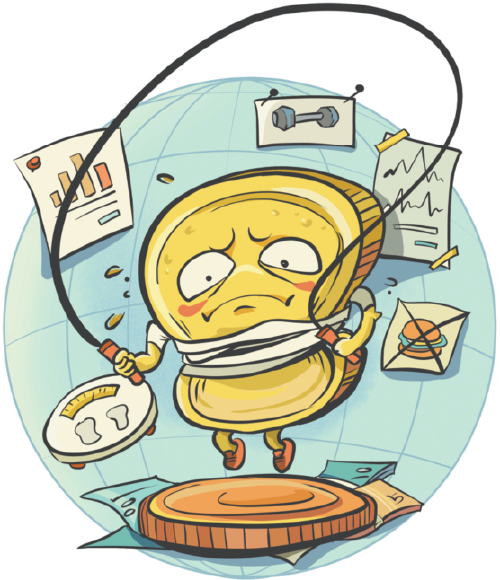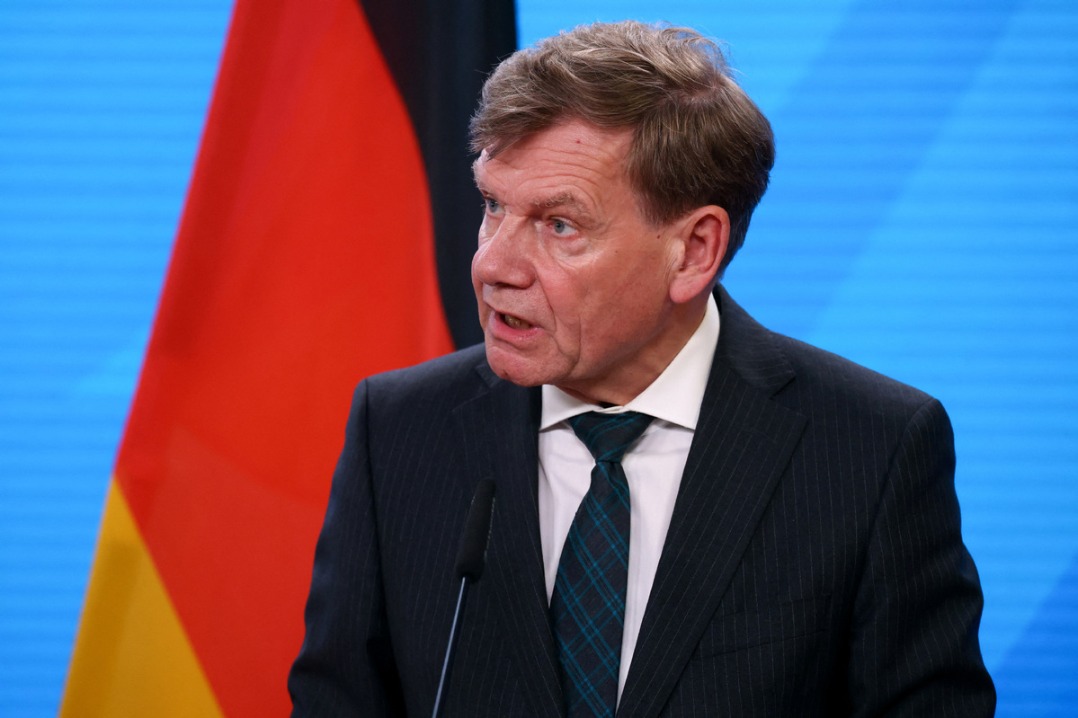A shift underway
After continuous tightening in 2022, most Asian economies will likely have a new monetary policy this year

Editor's note: The world has undergone many changes and shocks in recent years. Enhanced dialogue between scholars from China and overseas is needed to build mutual understanding on many problems the world faces. For this purpose, the China Watch Institute of China Daily and the National Institute for Global Strategy, Chinese Academy of Social Sciences, jointly present this special column: The Global Strategy Dialogue, in which experts from China and abroad will offer insightful views, analysis and fresh perspectives on long-term strategic issues of global importance.

After continuous tightening in 2022, most Asian economies will likely have a new monetary policy this year
In response to persistently high inflation, many major central banks in Asia have maintained the stance of monetary tightening policy. Most Asian economies started the tightening process in the wake of a monetary tightening cycle that started globally in 2022. They have continued the monetary tightening policy into 2023 mostly because of growing inflation pressures.
Pakistan's consumer price index jumped 31.5 percent year-on-year in February last year, the highest in nearly 50 years. The inflation rate in Iran shot up to over 50 percent in January and further to 53.4 percent in February this year, despite a temporary decline in the second half of 2022. Turkiye's inflation rate has been dropping, but still stood at 55.2 percent in February.
Furthermore, the inflation rates in certain Asian countries exceeded the targets set by their central banks. For instance, although the inflation rate in India declined to around 5.7 percent in December last year, the rate has remained above the central bank's tolerance band of 6 percent since the start of 2023. Inflation has been easing in the Republic of Korea and dropped to 4.8 percent in February, still much higher than the 2 percent inflation target set by the nation's central bank. Indonesia's inflation rate has stayed above the central bank's target range for many consecutive months since last year.
It is against this backdrop that some Asian economies have decided to continue to substantially hike interest rates in 2023.In March, Pakistan's central bank raised its key policy rate by a massive 300 basis points to 20 percent amid rising inflation; Sri Lanka raised its benchmark rate by 100 basis points taking the borrowing cost to 16.5 percent.
However, it takes quite some time for monetary tightening to have a noticeable impact on inflation. In the meantime, economies are concerned that prolonged monetary tightening might hurt their economic growth. This has prompted some central banks to be more cautious about future rate hikes. The ROK's central bank kept its benchmark interest rate steady in February and March this year following a 25-basis-point hike in January, although the central bank said it could continue to hike rates as needed for some time. India's central bank brought down its interest rate hike to a modest 25 basis points in February. Indonesia's central bank raised its key interest rate in January and has kept it unchanged ever since.
In contrast, some Asian economies have maintained relatively loose monetary policies.
Three months after the last cut, Turkiye's central bank lowered its key rate to 8.5 percent in February, in an attempt to cushion the economic impact of the earthquake. The move followed four consecutive months of rate cuts (totaling 500 basis points) in the face of high inflation in 2022.
China has been maintaining a relatively loose monetary policy. In March 2023, the country's central bank cut the reserve requirement ratio for financial institutions by 0.25 percentage points, after cutting the one-year loan prime rate by 10 basis points and 5 basis points in January and August 2022, respectively. In February, the CPI rose by just 1 percent from a year before, creating room for the government to launch more monetary easing policies.
In Japan, the inflation rate has been over 2 percent for many consecutive months since April 2022, with its CPI rising to 4.3 percent in January. In December 2022, Japan's central bank raised its cap on 10-year government-bond yields, from 0.25 percent to 0.5 percent. The move has resulted in an increase in bond yields and to a certain extent, been interpreted by some as an interest rate hike. However, on the whole, the country's central bank has maintained its stance on loose monetary policies.
In the future, Asian economies are expected to decelerate their monetary tightening process — or perhaps more countries will start to loosen their monetary policies. A sharp slowdown of world economic growth amid mounting uncertainties this year will inevitably deal a blow to Asian countries' economic growth. Therefore, most of them will register slower growth in 2023 from 2022, although the region's overall economic performance is better than other regions. According to the OECD Economic Outlook, Interim Report March 2023, India's growth is projected to moderate to 5.9 percent in fiscal year 2023, down 1 percentage point from the previous year; the same is happening in the ROK, Turkiye, Indonesia and Saudi Arabia, among others. The slowdown in growth calls for more support from loose monetary policies.
Inflation is another factor deciding the future of monetary policies. Currently, most commodity prices have retreated from their peak levels, mitigating the pressure of imported inflation on Asian economies. The FAO Food Price Index declined for the 11th consecutive month to 129.8 points in February, 18.7 percent down from its peak in March 2022. In March 2023, the average OPEC basket crude oil price was around $80 per barrel, compared with the peak of $120 per barrel in June 2022. A decline in global commodity prices including food and energy could ease the inflation pressures for Asian economies, thus creating a favorable condition for their monetary loosening.
The recent high-profile bank failures in the United States will likely prompt the US Federal Reserve to slow rate hikes, which could to a certain extent ease the external tightening pressure on other regions, including Asian economies. The Silicon Valley Bank stumbled due to a mismatch of assets and liabilities, which is to a great extent caused by the Fed's fast pace of interest rate hikes. Currently, a large number of US banks are facing similar problems and the liquidity problem of the US banking sector is likely to spread further. Therefore, besides inflation and growth indicators, the Fed will have to give financial market stability more consideration, or even make it a priority of future monetary policy shifts. This will prompt the Fed to slow the pace of rate hikes or even change its monetary stance when necessary, which could mitigate the external tightening pressure on Asian countries.
The future of Asia's monetary policy is faced with great uncertainties. It remains necessary for countries plagued by stubborn inflation to keep up the inflation-fighting efforts with continued monetary tightening and further rate hikes. Countries that are currently under moderate inflation pressure may have the possibility to witness elevated inflation in the future, which could impede the implementation of loose monetary policies. In April 2023, Japan's central bank will have a new governor and it is likely that the country will shift from its ultra-loose quantitative easing policy. However, amid mounting global economic uncertainties, the vast majority of Asian economies will likely have a shift in monetary policy this year, following continuous tightening in 2022.
The author is an associate research fellow of the Institute of World Economics and Politics at the Chinese Academy of Social Sciences and the director of the Department of Global Economic Research at the National Institute for Global Strategy at the CASS.The author contributed this article to China Watch, a think tank powered by China Daily. The views do not necessarily reflect those of China Daily.
Contact the editor at editor@chinawatch.cn.
































